My journey back to film, by now I’m sure, is a common enough story; however it still surprises me every time I think about it.
As a child of the 70’s and 80’s with photography as one of the things we all did in our house, I was fascinated with cameras and used to handle my father’s Zeiss Ikon Ikonta and my brother’s Olympus OM-1 with reverence.
When I was lucky enough to afford my own first serious camera – a Minolta 7000 in 1988, it was like something from the future with its auto-focus and built-in motor drive. I subsequently moved on to Canon and has a few EOS cameras in the 1990’s. Like a lot of my peers in the 2000s, I (unwisely, as it turns out) ditched my film gear and moved to the world of digital where I have been for the last twenty years.
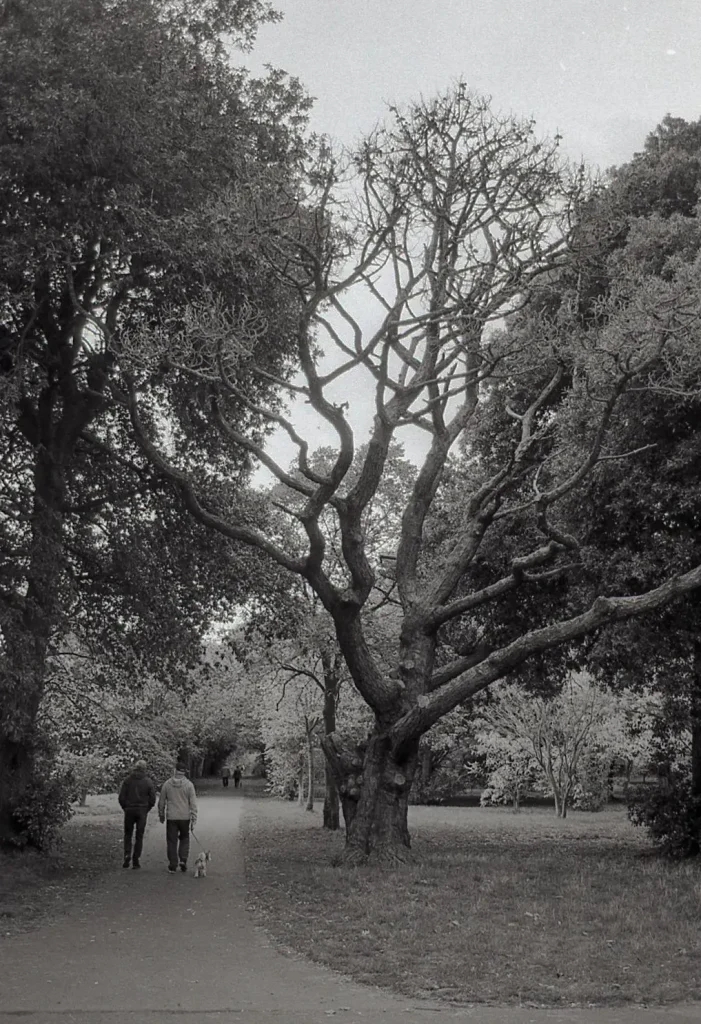
In late 2020, the camera club I’m a member of held a €20 film camera challenge and I bought a Nikon F65 on eBay for £15, shot a roll of Portra 160 and to say I was stunned by a) the quality of the images and b) by how much I enjoyed the whole experience is an understatement.
Researching the right camera, hunting for the best one at a good price and then bidding for the camera was great fun. I also enjoyed looking at the different film options and selecting what I thought would suit – the fact that film was still available and that there were a number of options in colour and black & white really surprised me.
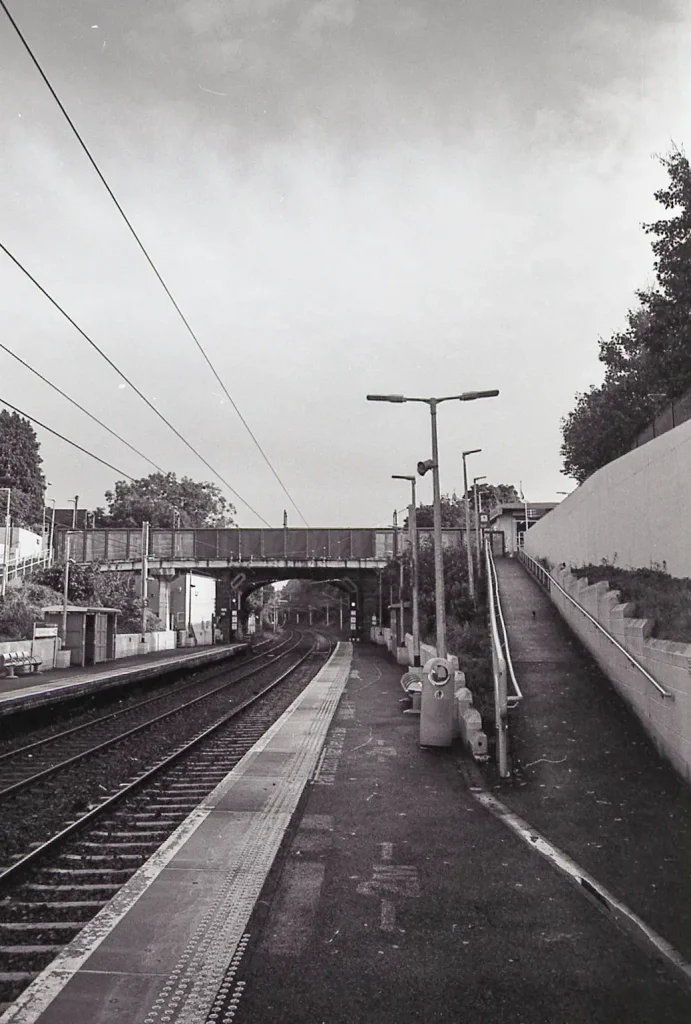
Even more enjoyable was the shooting experience – the slow-down in taking pictures, the fact that it took me a couple of outings to get through a roll of film and then the anticipation of waiting for the scanned images to come through was such a different experience to blatting off 100’s of shots on an outing and then the instant gratification of either chimping on the back of the camera or loading into Lightroom and scanning through the shots. My initial films were colour with a few black and white – to my surprise, I have started to process and scan my own negatives and now shoot nearly exclusively in B&W. Re-learning the art of processing after a gap of 35 years was great and I really enjoy the anticipation of waiting to see the initial preview of the scans on the laptop.
Since that initial road to Damascus film moment for me, I have ended up repeating the experience many times – researching and purchasing cameras and trying out different types of film. Where I can see value, I am looking at Nikon and Minolta SLRs. While I can see the attraction of point & shoots and rangefinder cameras, my photography DNA is rooted in SLRs going back a long way and I’m perhaps a bit blinkered in that respect. When you consider what excellent SLRs (and how many of them) you can buy for the price of a Contax T2..…perhaps that’s for another article.
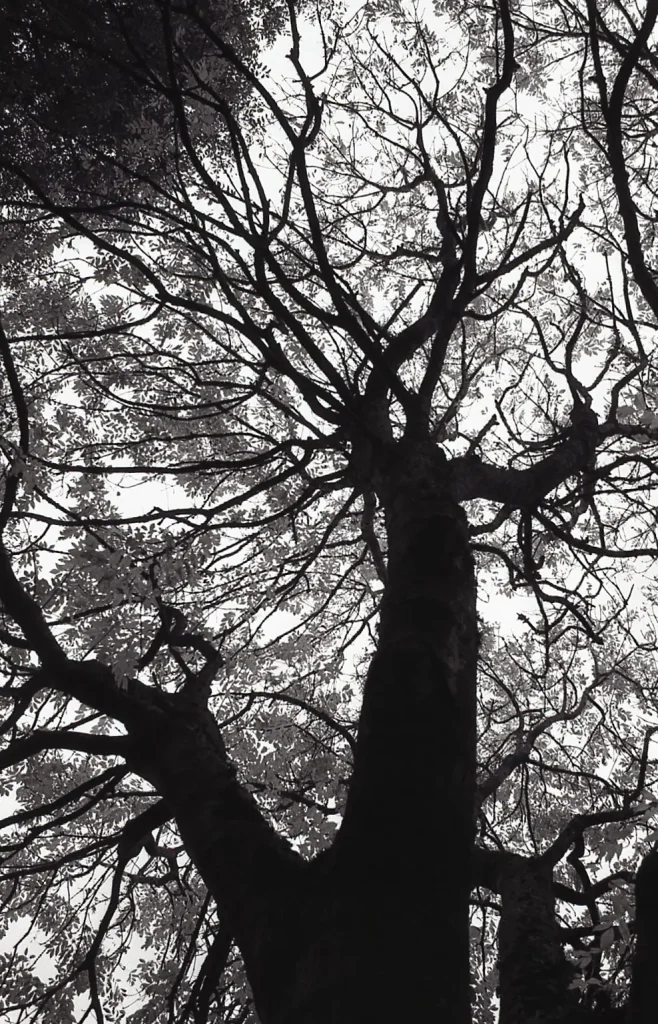
This brings me to the Minolta XE1. I spotted one of these when leaving in my Nikon FE for a CLA. The guy in the repair shop had one on his desk and when I picked it up, I could immediately tell that this camera was different to anything I had seen before and in a class of its own above any of my other Minolta’s or Nikons (with the possible exception of my F3). When I got home later that day, I started to do a bit of research on the XE and learned all about the Leica / Minolta partnership that produced the XE. When I looked at the specifications, they were nothing to write home about and were in line with much of the competition at the time; electronic operation, aperture priority function, shutter speeds of 4 seconds to 1/1000th of a second, exposure compensation +/- 2 stops and using the Minolta CLC standard exposure metering (two readings -high and low and averaging). It uses the standard 1.5v LR/SR44 batteries (thankfully!) and has a very nice film advance indicator on the back of the camera.
I started to look for a good example for sale and was surprised and pleased to see that these very excellent cameras were available for less than €100. I found a German site selling one in what looked like excellent condition for €89, purchased it and eagerly awaited its arrival. It arrived a few weeks later and I was delighted with the condition – literally mint without so much as a mark on the base plate. The viewfinder was clear and bright, the shutter speeds at least sounded correct and the exposure meter measured up well against my DSLR meter. What is most evident when you hold the camera in your hands, operate the winder and the shutter release is the quality of the materials and construction that went into making the camera – there is a noticeable increase in quality over and above other similar cameras of its time.
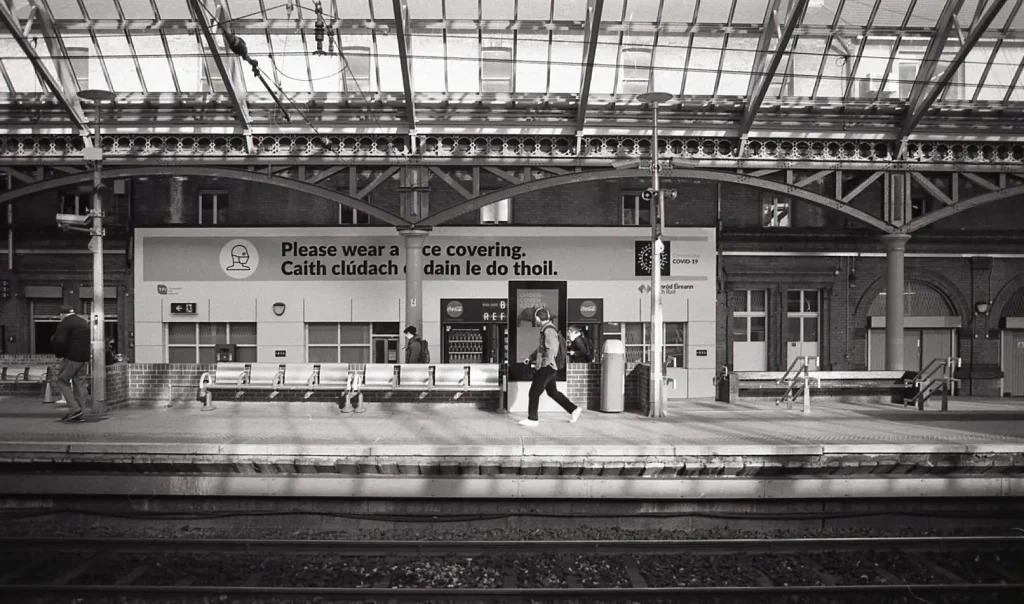
I paired the XE1 with a Minolta 28mm 2.8 MD I had been using on my X-700, loaded in a roll of Ilford FP4 and shot the roll over the next few weeks in a few locations. The camera was a joy to use and feels absolutely natural in the hands. It is relatively large and heavy but still lighter and smaller than one of today’s DSLRs. The size and weight give it a solid, reassuring feel rather than it feeling like hanging a rock around your neck.
When I made my way through the film and processed/scanned , I was delighted with the results – exposures were correct and the lens had given me very sharp results with great contrast.
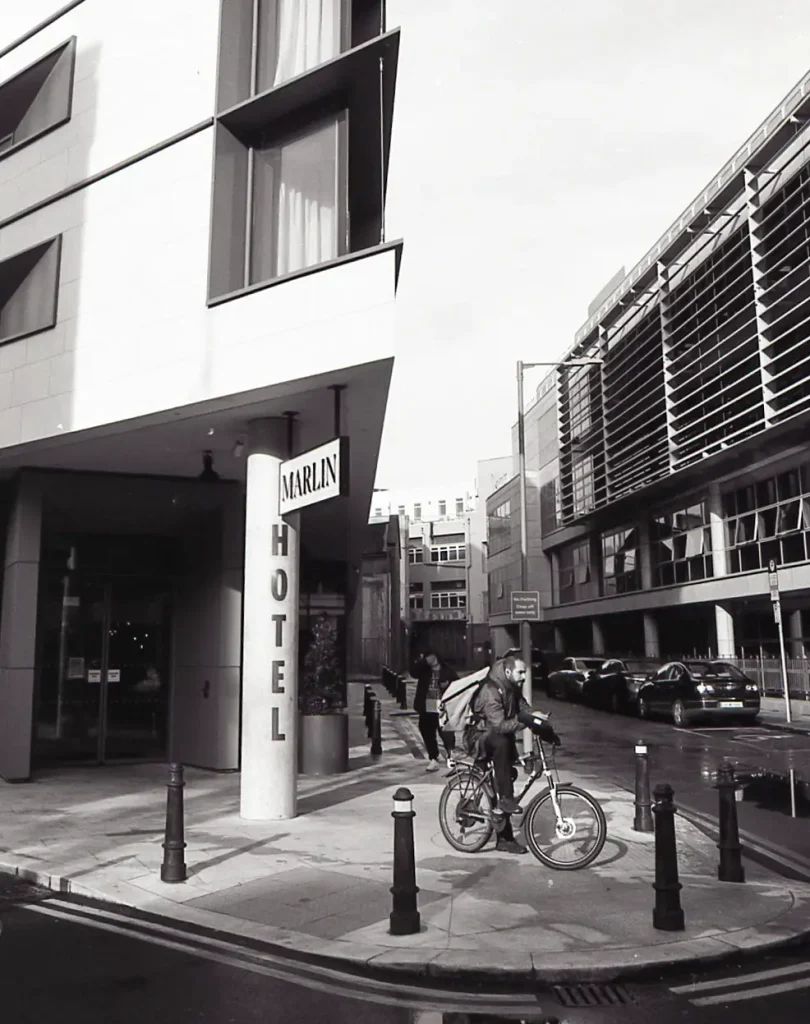
What would I improve on this camera ??? Probably nothing to be honest (other than what they did with the XD perhaps). I can’t understand why this camera and Minolta cameras in general seem to be sleepers in the re-emergence of film photography. It may be because the brand no longer exists ? It has to be remembered that Minolta were true innovators through several generations of cameras through the 60’s, 70’s and 80’s and their massive lens and accessory infrastructure was the match of other manufacturers of the time.
Share this post:
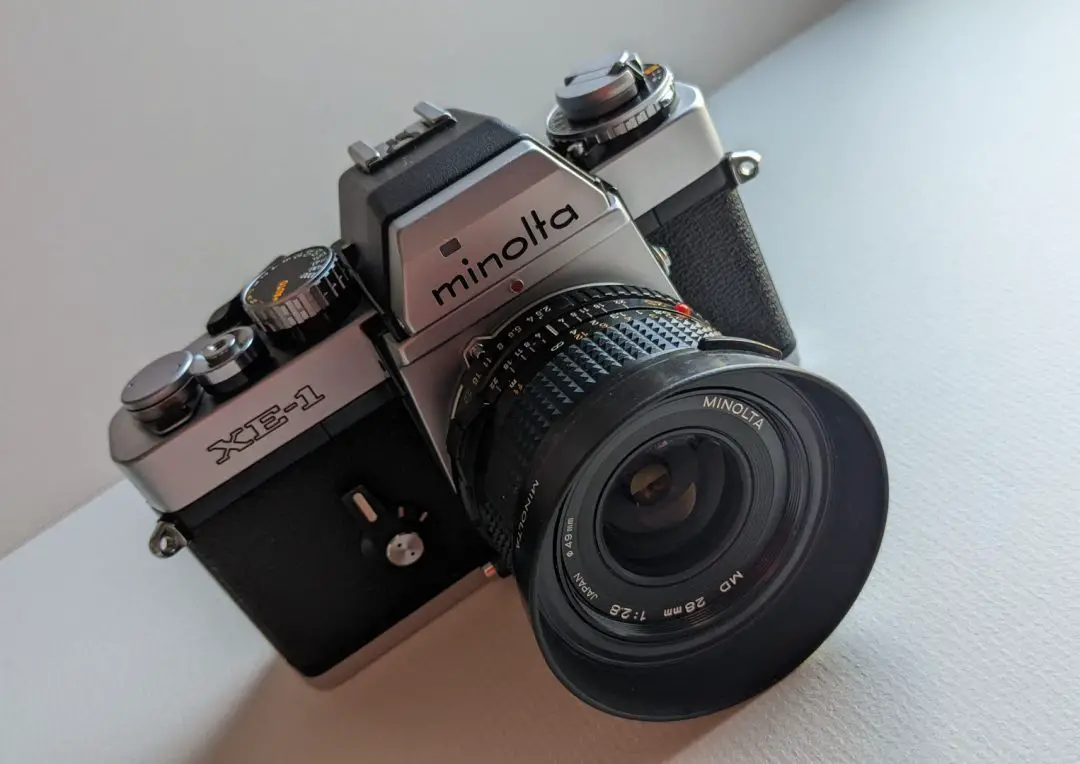








Comments
Martin Siegel on 5 Frames With a Minolta XE1 on Ilford FP4 – By Conor O’Brien
Comment posted: 10/03/2022
Minolta cameras were sometimes disregarded for the wrong reasons. E.g. the Maxxum/Dynax 7 was aimed at the professional market as was rediculed by camera magazines for the pop up flash which was never intended for lighting but to synch studio flashes without speciality gear (Minollta used their own hot shoe setup already)
Comment posted: 10/03/2022
Steve Ember on 5 Frames With a Minolta XE1 on Ilford FP4 – By Conor O’Brien
Comment posted: 10/03/2022
I enjoyed your account of discovering the Minolta XE-1 and certainly the quality of your photos on FP-4.
Like you, I came to Minolta (SLR, at least) and discovered that "sleeper" quality a bit late, having accumulated most of my experience with a variety of other makes. I was fortunate in finding a very clean, truly like new, XD-S and a couple MD Rokkor lenses plus motor drive all in that well-cared-for condition, from a Japanese seller, and I found the shooting experience and results - even with slide film - really lovely.
I mention this in the event, now that you have embraced Minolta, you decide you may want to add a companion body. The XD-S (Japanese market only; goes by other numbers elsewhere) has that wonderful combination of compactness and solid feel, such that even with motor drive, it is not a "rock" around your neck.
Wishing you lots of pleasurable shooting,
Steve
Comment posted: 10/03/2022
gil aegerter on 5 Frames With a Minolta XE1 on Ilford FP4 – By Conor O’Brien
Comment posted: 11/03/2022
Comment posted: 11/03/2022
Marius on 5 Frames With a Minolta XE1 on Ilford FP4 – By Conor O’Brien
Comment posted: 11/03/2022
Nice article and pictures! I am also a owner of an XE and very happy with it as I wanted a quality feeling and tactile feeling that comes close to my Leica experience. I am curious on how it compares to the Minolta XD and also the f3 with respect to quality in use, build and viewfinder (it seems XD brighter and better for focus) . Have a good day.
Comment posted: 11/03/2022
Peter Huppertz on 5 Frames With a Minolta XE1 on Ilford FP4 – By Conor O’Brien
Comment posted: 11/03/2022
I have focused on Minolta since I was 14 years old (in 1972), because my camera store owner demonstrated the superiority of Rokkor optics over anything else that came from Japan. and I still do to this day, having gone through a sizable collection of Minolta (and Sony) gear.
The XE-1 is possibly the most sensible professional-grade camera they ever made. The XM Motor, with the AE-S Finder, matched it in terms of feeling substantial, but the XE-1 simply made more sense.
You'll find that the XD-7 (of which I have two) has a noticeably brighter viewfinder -- in my opinion, that's the most important difference between the XD-7 and the XE-1 . I know it's smaller, lighter, and has a multimode automatic exposure, but most of us don't care about shutter priority AE.
I use the XE-1 for favourable lighting conditions, with ISO100 film or slower. For ISO320 and ISO400, I'll use the XD-7 or the X-700, and for anything over ISO400 (when light becomes an issue for my 64 year old eyes), I rely on autofocus, and I'll use the Dynax 800si.
Comment posted: 11/03/2022
Comment posted: 11/03/2022
Comment posted: 11/03/2022
Comment posted: 11/03/2022
Marcus Scholz on 5 Frames With a Minolta XE1 on Ilford FP4 – By Conor O’Brien
Comment posted: 12/03/2022
Chris O'Brien on 5 Frames With a Minolta XE1 on Ilford FP4 – By Conor O’Brien
Comment posted: 13/03/2022
I switched from an XE to a Leicaflex SL2.
Definitely an upgrade.... But probably mostly the lenses... And it's built like a tank.
Comment posted: 13/03/2022